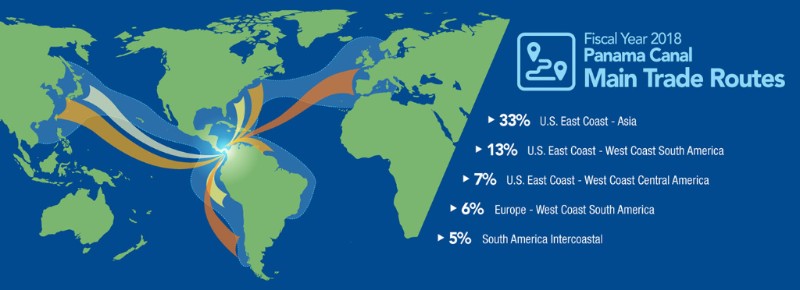The Panama Canal closed its 2018 fiscal year (FY 2018) with a record tonnage of 442.1 million Panama Canal tons (PC/UMS), which represents a 9.5 percent increase from the previous year.
With this tonnage, the Panama Canal surpasses the cargo projections of 429.4 million PC/UMS tons for FY 2018, as well as the 403.8 million PC/UMS tons registered in FY 2017.
The increase was driven by the transit of liquefied petroleum gas (LPG) and natural liquefied gas (LNG) carriers, containerships, chemical tankers and vehicle carriers.
During FY 2018, the Panama Canal increased the total available booking slots to eight daily for its Neopanamax Locks, offering greater flexibility and efficiency to customers choosing the Panama route.
The 2018 Fiscal Year began on October 1, 2017, and ended on September 30, 2018.
Performance by Segment
The container segment continued to serve as the leading market segment for tonnage through the Canal, accounting for 159 million PC/UMS tons of the total cargo, of which 112.6 million PC/UMS tons transited the Expanded Canal. Tankers - which include liquefied petroleum gas (LPG) and liquefied natural gas (LNG) carriers – were the second leading market segment with 130.3 million PC/UMS tons.
The next leading segments included bulk carriers (73.7 million PC/UMS tons) and vehicle carriers (49.5 million PC/UMS tons).
Main Users and Routes

The main users during FY 2018 were United States, China, Mexico, Chile and Japan. A total of 62.8 percent of the total cargo transiting the Canal has its origin or destination in the United States.











